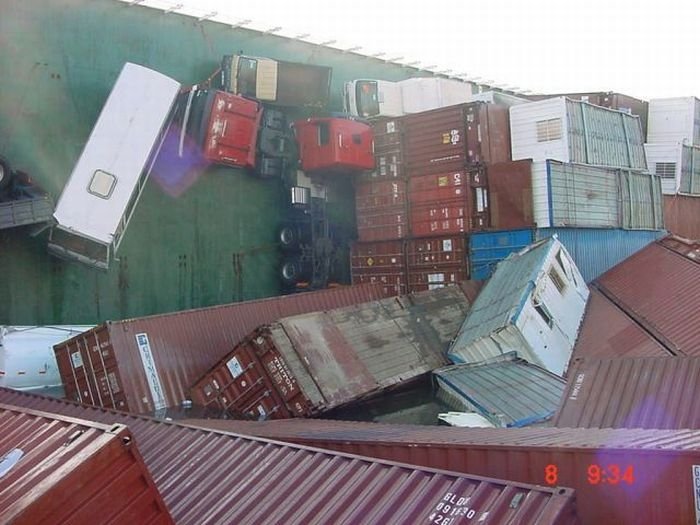|
|
Container Ship Accident
|
Today, approximately 90% of non-bulk cargo worldwide is transported by container, and modern container ships can carry up to 15,000 Twenty-foot equivalent units (TEU). As a class, container ships now rival crude oil tankers and bulk carriers as the largest commercial vessels on the ocean.
Container ships are designed in a manner that optimizes space. Capacity is measured in Twenty-foot equivalent unit (TEU), the number of standard 20-foot containers measuring 20 × 8.0 × 8.5 feet (6.1 × 2.4 × 2.6 metres) a vessel can carry. This notwithstanding, most containers used today measure 40 feet (12 metres) in length. Above a certain size, container ships do not carry their own loading gear, so loading and unloading can only be done at ports with the necessary cranes. However, smaller ships with capacities up to 2,900 TEU are often equipped with their own cranes.
Informally known as "box boats," they carry the majority of the world's dry cargo, meaning manufactured goods. Cargoes like metal ores or coal or wheat are carried in bulk carriers. There are large main line vessels that ply the deep sea routes, then many small "feeder" ships that supply the large ships at centralized hub ports. Most container ships are propelled by diesel engines, and have crews of between 20 and 40 people. They generally have a large accommodation block at the stern, near the engine room. Container ships now carry up to 15,000 TEU (approximately equivalent to 35 100-car double-stack intermodal freight trains) on a voyage. The world's largest container ships, the M/V Emma Mærsk and her sisters, have a capacity of 15,200 containers.
|
|









